Mad Hedge Technology Letter
July 11, 2022
Fiat Lux
Featured Trade:
(TOYING WITH BAD MANAGEMENT)
(TWTR), (TSLA)

Mad Hedge Technology Letter
July 11, 2022
Fiat Lux
Featured Trade:
(TOYING WITH BAD MANAGEMENT)
(TWTR), (TSLA)

Musk has pulled out of the Twitter deal.
By the time Twitter (TWTR) gets this acquisition through the courts which is now estimated as much as 5 years, Twitter will be bankrupt.
There will naturally be some movement before then.
Regardless of timing, Twitter shares are set to plunge. And you can't then blame Elon Musk for Twitter's demise and poor management.
In fact, Twitter is quite infamous in Silicon Valley for one of the worst management teams and this open secret has come back to hurt them in the wallet.
This is highly bullish for Tesla’s (TSLA) stock because it avoids Musk’s capital getting tied up in an overpriced Twitter deal.
TSLA stock bounced on this news and even if he does reverse course and buy Twitter for a discount as it drops fast, it will be seen as a great bargain for Musk and TSLA shares.
Tesla’s CEO announced his plans to buy social networking site Twitter in April for $44 billion and many thought this wasn’t a serious offer to begin with.
The contract says that Musk is required to pay a $1 billion breakup penalty and he has indicated that he is also trying to get out of that.
I believe Twitter was foolish in setting such a low break-up fee for the richest man in the world.
For most people, a $1 billion fee would be astronomical, but not when one can just liquidate a few odd Tesla shares with a snap of the fingers.
This low fee has been exploited and leveraged to get what he wants because he doesn’t care if he has to pay it.
In hindsight, management should have set Twitter’s breakup fee at a level which would have hurt the richest man in the world meaningfully and created a massive windfall for Twitter.
They didn’t and now the circus begins and who knows when, who, and how much will be the payout if any.
My guess is a termination fee of something around $10 billion would have been quite painful and cost-prohibitive for Musk.
Readers should remember that Musk offloaded $4 billion of Tesla shares around April to pay for Twitter. He sold out at all-time highs and so even if he paid back the $1 billion, the penalty is largely blunted by shifting around his resources.
My guess is that Musk exploits this situation to drain Twitter of its financial resources while buying its stock on the way down.
After he beats the company into submission, there will likely be a huge discount.
If the stock goes to $25, he’ll get a 60% discount on what at first would have been a $44 billion price tag.
Twitter has been fooled big time, made to look incompetent which exactly was the working assumption taken into this deal, which management has totally botched.
TWTR is trading at $34 today which is a far cry from the $54.20 he agreed to buy Twitter at.
This isn’t about Musk because everyone with half a brain would pull out of this deal with a deleveraging tech bubble.
My bet is Twitter slowly grinds lower and Musk finds a way to get Twitter on the cheap then fires the whole management team.
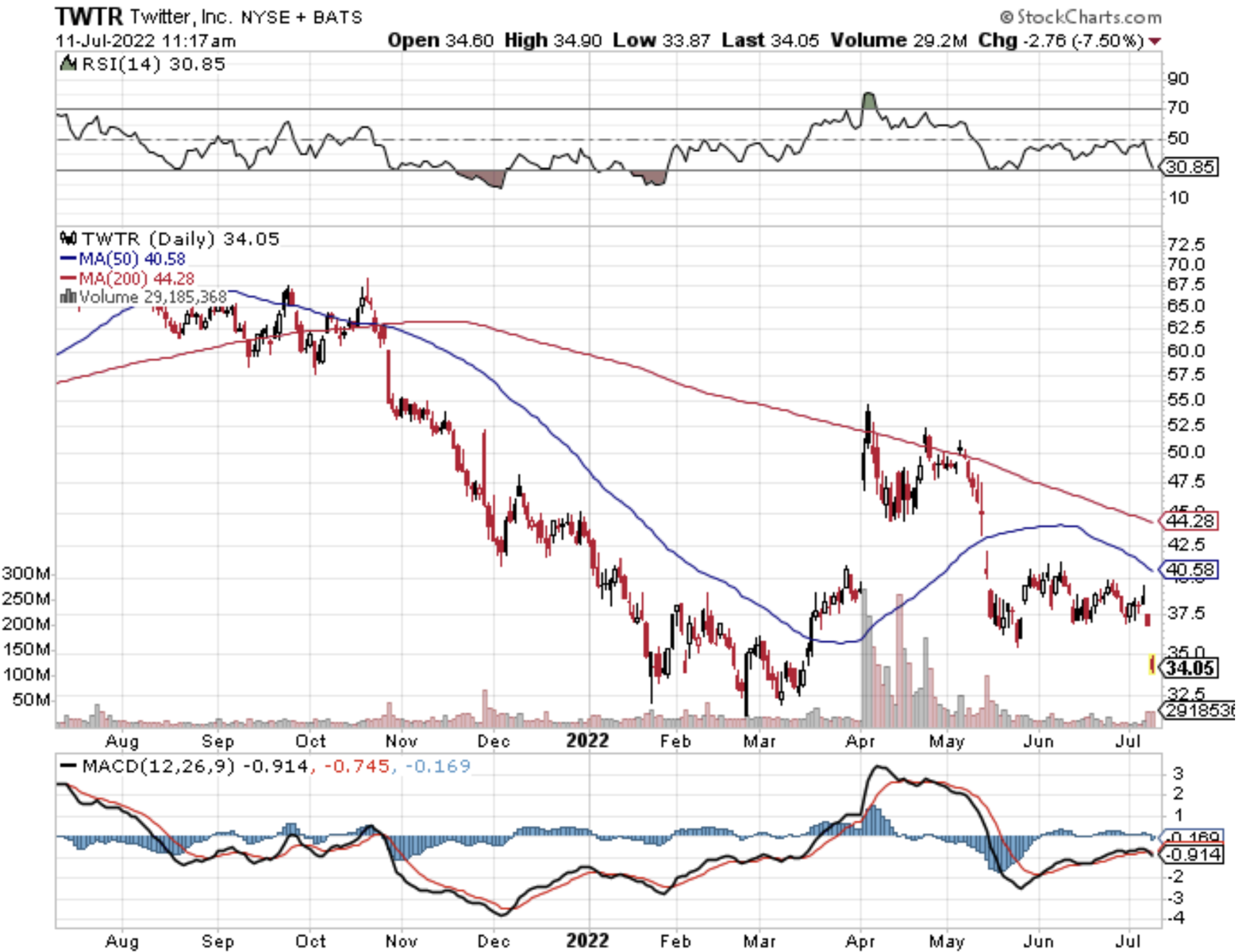
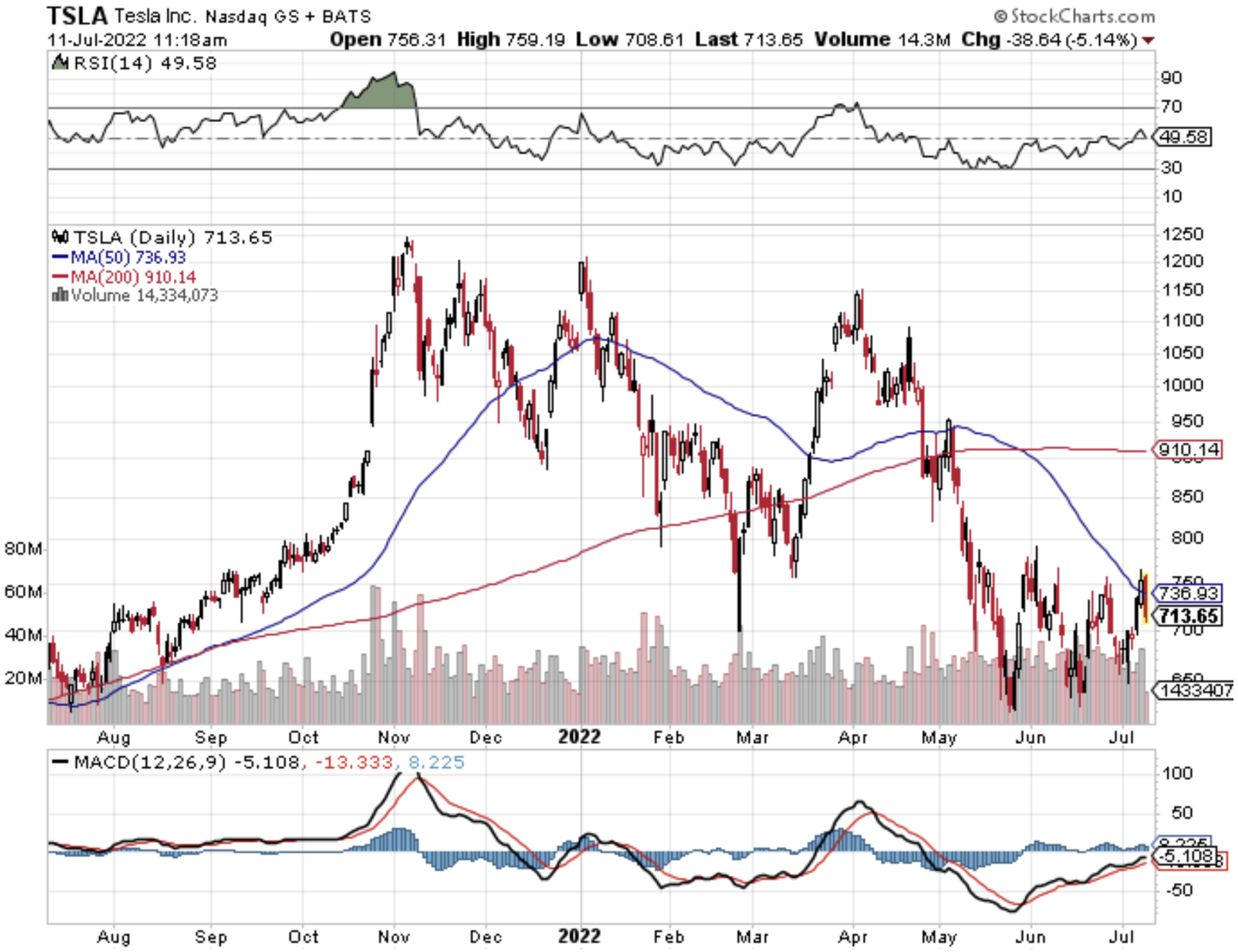
Mad Hedge Technology Letter
June 8, 2022
Fiat Lux
Featured Trade:
(THE ULTIMATUM)
(TSLA), (TWTR)

Founder and CEO of Tesla (TSLA) Elon Musk is clearly either angling for a cheaper purchase price for Twitter (TWTR) or is ready to walk away from the deal.
Even if he does walk away from the deal, he was able to sell Tesla shares at elevated prices, then rolling the capital into Twitter shares, and that in itself is worth more than $1 billion.
If you haven’t kept up with what’s happening, Tesla shares have fallen quite substantially, about 35% to be precise, since Musk unloaded those shares.
Around 35% of the $8.5 billion in Tesla shares by Musk would amount to around $3 billion and if he is forced to pay that $1 billion walkaway fee then he would still gain $2 billion net from his antics.
He is literally playing with house money at this point.
Aside from the actual deal, the global exposure of this deal to his own brand is worth over $15 billion in itself as everyone has been zoned in on this drama because of simple palace intrigue.
The $1 billion he would pay to walk away would also drum up another tsunami of media exposure for Tesla, Space X, Starlink, and Musk.
Musk treating this as his own Johnny Depp versus Amber Heard case is stimulating the media algorithms to push his name into every corner of the global media world so who cares about the $1 billion.
In short, Musk is already a winner, and if he can parlay this bot angle into a 30% discount on Twitter then that would be some epic showmanship while living on the edge.
He would be really making his cake and eating it too.
Musk has also become highly sensitive to how the social media world operates in which usually the loudest and most frequent poster usually is heard first and clearest.
He’s taken that strategy by posting on Twitter relentlessly and often about highly controversial content just so the media talk about him.
He’s not far away from every 24-hour news cycle at this point.
The Twitter sale agreement does allow Musk to get out of the deal if Twitter causes a “material adverse effect,” defined as a change that negatively affects Twitter’s business or financial conditions.
That's one reason Musk may be focusing on the spam bot problem — though he waived many of his rights to peek under Twitter's hood when he signed the deal.
Bots are basically programs that post automated tweets but have been systematically weaponized in the era of the internet.
Musk says it’s also a problem for advertisers who take out ads on the platform based on how many real people they expect to reach.
Musk wants to be compensated by the Twitter “bot” problem with either a lower Twitter price or the opportunity to walk away for free.
If the deal doesn’t go through, there is a high chance that Twitter shareholders sue the Twitter board for going against their fiduciary duty.
While I can easily see the Twitter board suing Musk while he countersues if he decides to walk away and doesn’t pay the $1 billion termination fee.
It would be a lawyer’s dream and a businessman can afford this if you’re the richest one in the world.
The market sensing Musk might not go through with the deal means that Tesla shares are free to rock higher and Twitter shares could sink.
Musk’s Twitter circus doesn’t affect Tesla’s real business itself.
Twitter has many internal problems along with terrible management and Musk has done everything he can to expose its hypocrisy.
If this deal completely turns sour, expect Twitter shares to tank big time, meaning like a halving.
Personally, I wouldn’t touch Twitter shares with a 10-foot pole.
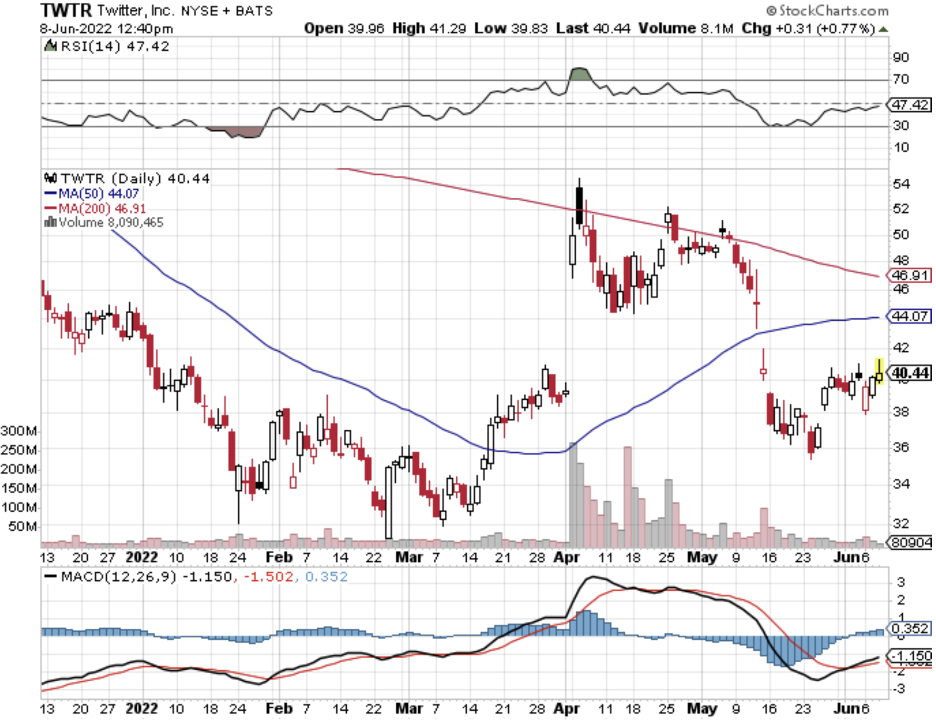
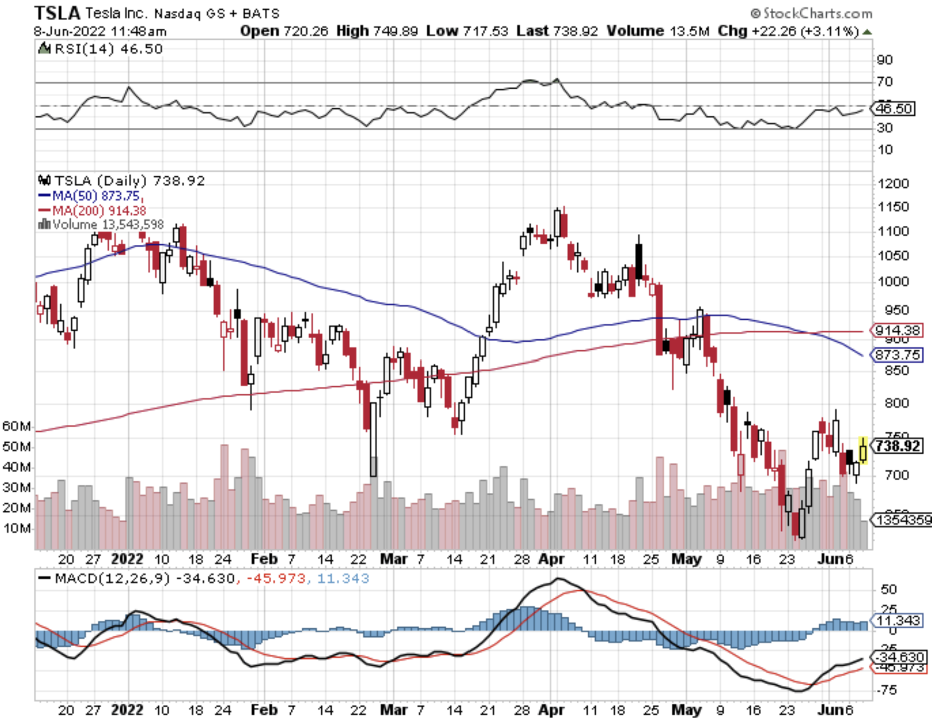
Mad Hedge Technology Letter
May 25, 2022
Fiat Lux
Featured Trade:
(AD MARKETING CRATERS)
(SNAP), (TWTR), (GOOGL), (FB)

This could be the proverbial canary in the coal mine for the consumer falling off a cliff.
There have been soft signals showing that credit card debt is piling up, but the truth is that Americans are spending more money on things they need and not on luxuries.
Snap (SNAP) recording a disastrous earnings report is showing us rapidly slowing growth and digital ad spend is usually first to go in the broader economy.
This leading indicator is essential to understanding the economy because companies don’t and won’t advertise when they understand the incremental marketing spend won’t result in meaningful sales.
Companies are just losing money at that point.
What happens is just a complete freeze of ad spend only to hibernate until the next cycle picks up again and demand returns.
The same dynamics apply to the other digital ad players like Google (GOOGL), Facebook (FB), and Twitter (TWTR) which is why we are seeing 10% selloffs in Google.
The benefit to being such a big and strong company is that Google sells off by 10% while Snap drops by 45%.
Not exactly fair but long-term holders won’t dump Google right away unless there are real structural problems.
To break it down even further, the recession is quickly approaching and the economy is now going into reverse.
Next will be job layoffs and laid-off workers won’t buy much if marketed to.
Snaps’ macroeconomic environment has deteriorated further and faster than anticipated since its last earnings update just a month ago.
Digital ad spend goes quicker than local TV and radio following shortly after.
National TV was much later, and ad agency spend was also later than cycle media buying.
Roku and FuboTV will be hardest hit initially. The length and depth of the recessionary slowdown will determine whether or not pain makes its way to the longer cycle areas of the ad market.
In its first-quarter earnings disclosure in April, Snapchat’s daily active users hit 332 million, an increase from 319 million at the end of 2021.
Snap accounts for only a small low-single digit percentage of total digital advertising, but the macro factors cited should be relevant for all companies.
I believe the read-through is most negative for Twitter, which is 75% dependent on brand ad revenue and has 15-20% exposure to Europe.
Facebook also has significant European exposure (25% of its ad revenue), though its brand advertising exposure is likely well under 25%.
The Nasdaq continues to be a sell the rally type of market because there are no dip buyers.
For years, the dip buyers would save the Nasdaq.
Not only that, but the widespread destruction of tech has also forced many big whales to sit on the sidelines.
Why buy now when the risk reward isn’t favorable?
So now we are headed to a recession and traders are waiting for the recessionary data to flow to confirm these Snap earnings.
If this occurs, don’t be surprised to see a negative feedback loop that triggers algorithms to sell.
The Fed still hasn’t nearly been aggressive enough as well and is selling this false belief that there won’t be a recession and the consumer is strong.
That is yet to be priced into technology shares.
The upcoming data will reflect that the opposite is happening which means the buyer strike continues.
Avoid the dip and sell the rip.
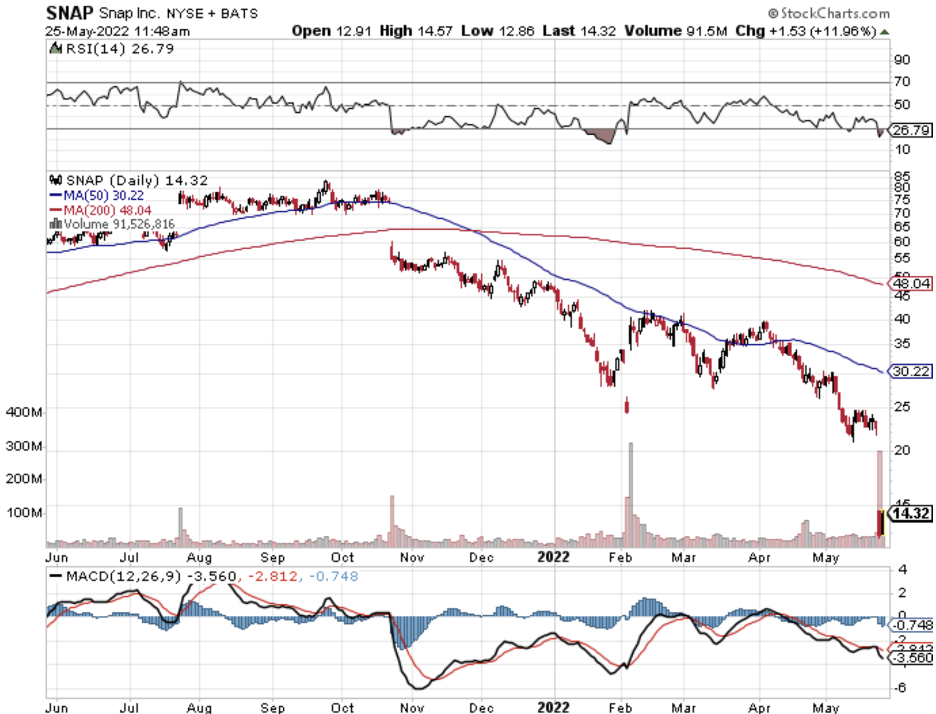
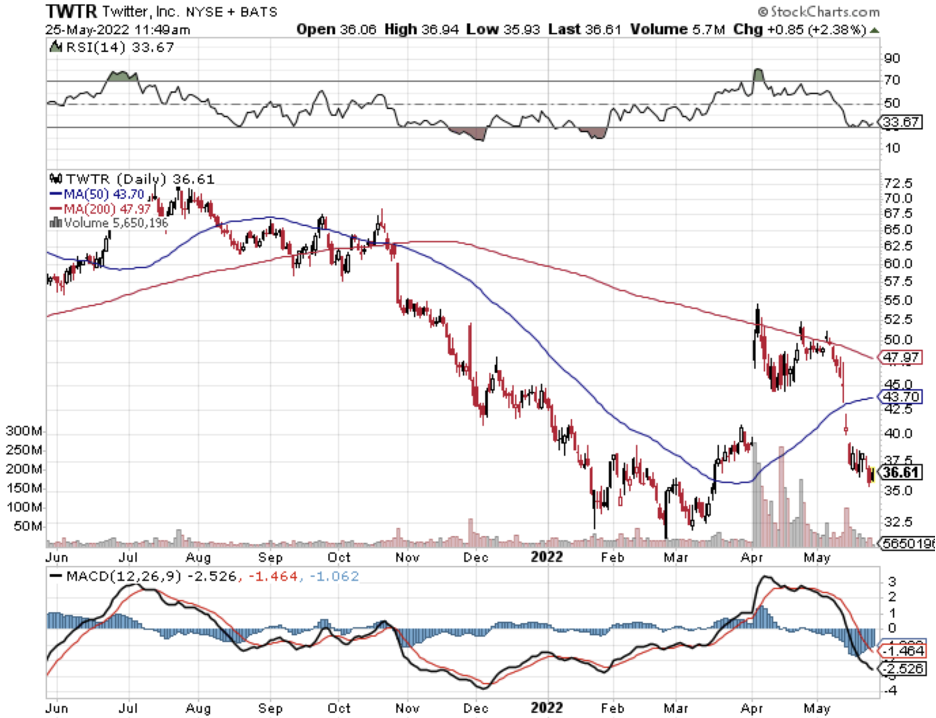
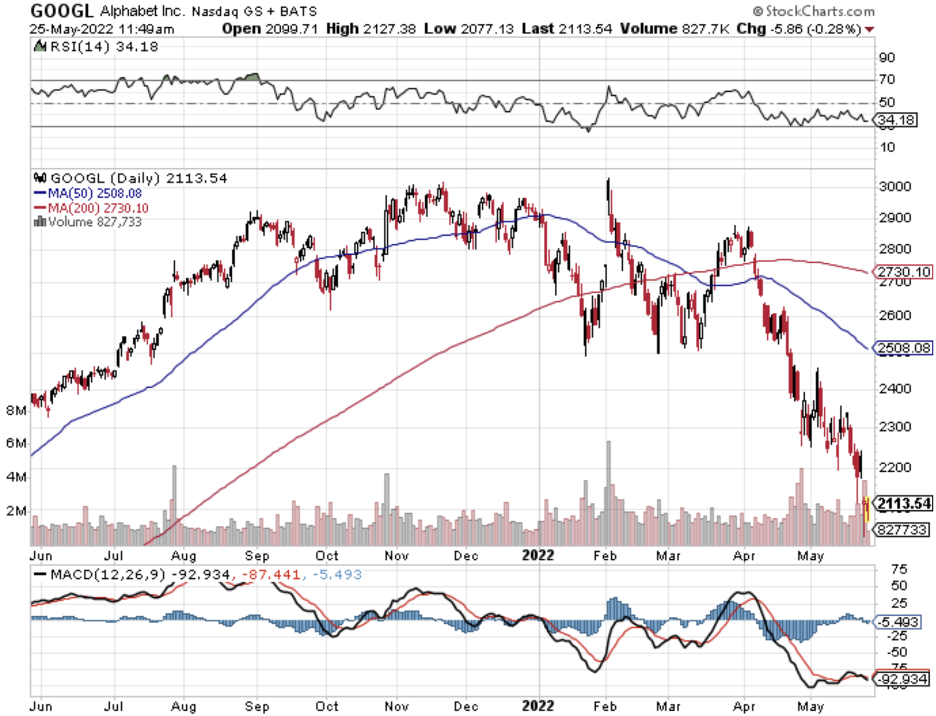
Mad Hedge Bitcoin Letter
April 26, 2022
Fiat Lux
Featured Trade:
(THE DOGE EFFECT)
(DOGE), (TWTR), (TSLA), (ETH), (BTC)

One of the more outsized second order effects occurring in the risk markets right now is the boost Dogecoin (DOGE) is receiving from the carnival atmosphere that is Elon Musk buying Twitter (TWTR).
DOGE is up 30% in the past week but down 500% from last May when DOGE experienced a euphoric ride up only to come crashing down.
It’s no surprise that Musk, through his EV company Tesla (TSLA), owns Bitcoin on its balance sheet and he’s on record lately admitting that Bitcoin is the only cryptocurrency that Tesla owns, and they haven’t sold any.
Personally, he owns Ethereum (ETH) and Dogecoin (DOGE) and he specifically mentions the reason for owning Dogecoin is because he likes dogs.
On the surface, it sounds ridiculous that Musk would speculate on an altcoin just because he likes dogs, but people also thought it was crazy he would buy Twitter for $44 billion.
Musk explained he arrived at the conclusion to buy DOGE through a well-known principle called Occam's razor.
That is a philosophical principle that states the simplest variant is usually the best choice.
He then goes on to explain that he subscribes to a variant of Occam’s razor where the most entertaining variant is usually the best choice.
He is entertained by Shiba Inu dogs so he buys Shiba Inu Alt Coins represented as DOGE coin.
Either way, his association with Dogecoin and Bitcoin has done wonders for its short-term price action with Bitcoin and other cryptocurrencies surging.
Perhaps this could be the reason for the short-term stabilization of crypto.
Other factors that could be lifting crypto are U.S. dollar holders looking for alternative assets during the highest inflation in decades; some buying after the American mid-April tax deadline passing; the war in Ukraine and the U.S.’s OFAC sanctioning of Russian bitcoin miners and the ongoing uncertainty about whether the Securities and Exchange Commission (SEC) might approve spot Bitcoin ETFs in the U.S.
Musk also said last month that he wouldn’t sell his dogecoin, and would also continue to hold bitcoin and ether.
Earlier this year, Tesla began accepting dogecoin for merchandise purchases on its website. DOGE holders could be hoping that Twitter under Musk’s leadership may see more of the same — a use case for the token. Late last year Twitter unveiled a tipping function allowing users to send creators bitcoin.
The way DOGE achieves higher price discovery is for the potential for dogecoin to be given more utility on one of the biggest social media networks once Elon has official control of the company.
Every incremental bit helps.
Imagine DOGE freely mingling in and out of Twitter accounts that highly entertain or Musk floating the idea that for $3, every account can get a blue checkmark which has traditionally signaled a large and influential account.
Paying this $3 using DOGE could be the way that Musk integrates DOGE is onboarded onto the Twitter ecosystem.
Other use cases could also find their way into the DOGE coin ecosystem such as a $5 vanilla Twitter registration fee and with a total addressable market like Twitter and the chance to monetize the platform in a different way, I wouldn’t put it past Musk that he has some sort of plan for DOGE, BTC, or ETH.
Musk has been a huge proponent of free speech and during a Ted Talk interview he said buying Twitter “had nothing to do with economics.”
That thought right there could lead to a one-way avalanche of crypto payments embedded all over his new social media company.
Don’t write off DOGE, the richest man in the world might keep pushing it to the public and we already know that every associated Tweet about it results in a higher price.

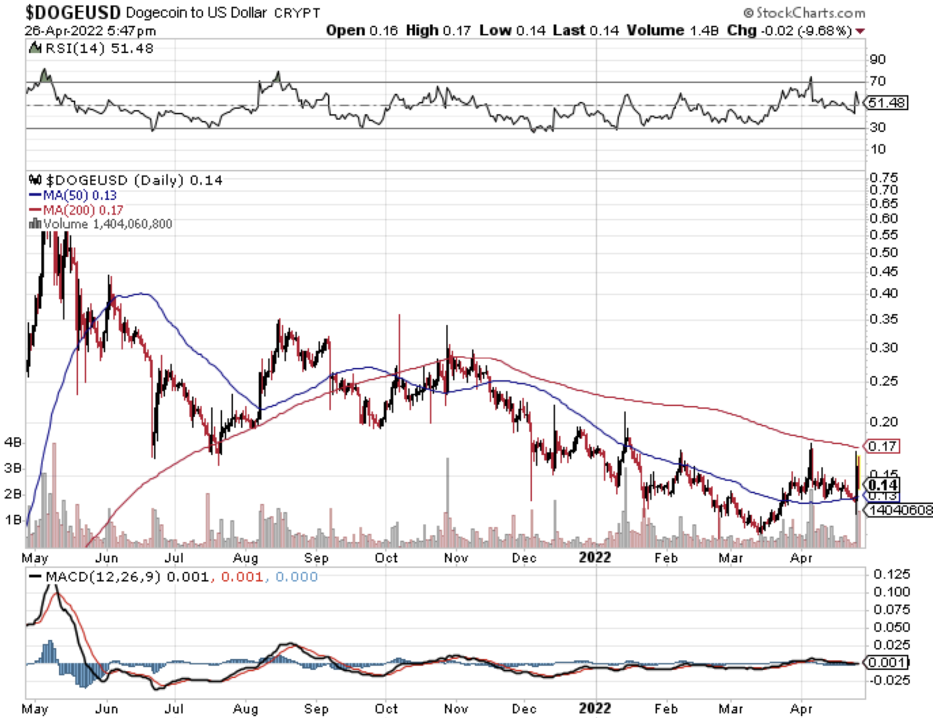
Global Market Comments
April 25, 2022
Fiat Lux
Featured Trade:
(MARKET OUTLOOK FOR THE WEEK AHEAD, or THE ESCALATOR UP AND THE WINDOW DOWN)
($INDU), (SPY), (TLT), (WFC), (JPM),
(TSLA), (TWTR), (FCX), (NFLX), (GLD)

On Friday, we saw the worst day in the market since October 2020. And it won’t be the last such meltdown day.
The big question for the market now is how far it can fall without actually having a recession. The answer is 20%, and we are down 8.6% so far.
The economy is as strong as ever and everyone that is predicting a recession is using outdated, useless models. If I have to wait nine months for the delivery of my sofa demand is still off the charts.
Spoiler Alert!
I have to do some math here to explain the current situation. So, don’t run down the street screaming with your hair on fire. Math is your friend, not your enemy.
With an average estimated $227.33 forecast earnings for the S&P 500, we are currently trading at a multiple of 19.29X ($4,386 divided by $227.33). At the November high, we were trading at 24X. At the 2009 Financial Crisis low, we saw 9.5X for a few nanoseconds. There’s our range, 9.5X to 24X.
So, stocks are still historically expensive. They won’t start to approach cheap until we drop to 15X, a level we haven’t seen in nearly a decade. That is another 4.29 multiple points lower, or down 22.23%.
How do we get to cheap?
Since November, the S&P 500 has earned another $60, or 1.36X multiple points. We’ll probably pick up another $55, or 1.25X multiple points in Q2. That gets us halfway there.
The (SPX) is down 8.6% so far in 2022, or $414. If Q2 earnings come in as expected, then the (SPX) only has to fall by another 1.68X multiple points, or 8.72% to $4,004 to get to our 15X downside target.
I hasten to remind you that this was exactly 10% below my downside forecast of an H1 loss of 10% in my 2022 Annual Asset Class Review (click here)for the link.
The Ukraine War and the third oil shock, neither of which I, or anybody else, predicted, account for the second 10% loss.
How long will it take to reach these new, enhanced downside targets? My guess is by the summer.
And you wondered why I was still 100% in cash….until Thursday?
So what does the Federal Reserve make of all this? Even though they say they don’t care about the stock market, it really does, especially when it is crash-prone.
Some 2.50% in expected interest rate hikes are already discounted by the futures market. The market has already done the Fed’s work, and we were short all the way, via the (TLT). We will likely get aggressive half-point rate hikes through April to June, especially if inflation goes double-digit, which it might.
At that point, the Fed may be ahead of the curve. If we get the slightest backtrack in inflation, even just for one month, the Fed may well back off a bit on its tightening strategy and skip a meeting, igniting a monster stock market rally in the second half.
Poof! Your inflation fears have gone away.
Jay Powell Thrust a Dagger into the heart of the Stock Market, sending the Dow down 1,000. At this point, the only question is whether we get two back-to-back 50 basis point rate hikes coming, or two back-to-back 75 basis point rate hikes. 75 basis points is becoming the new 25 basis points.
TINA is dead (there is no alternative to stocks) with virtually all fixed income securities offering a 3.00% yield and junk bonds paying 6%. These kinds of yields have started sucking money out of stocks into bonds, which is why I am long bonds.
There is one other sparkly asset class that is worthy of attention here. Gold, the yellow metal, the barbarous relic (GLD), may have just entered a long-term structural bull market. By evicting Russia from the global financial system, we have driven it out of dollars and into gold and Bitcoin for good. Take a look at the Gold Miners ETF (GDX).
And Russia is not alone in pouring its revenues into gold, which can’t be seized by foreign governments, so is every other country that might be subject to future sanctions, like China. This adds up to a heck of a lot of new gold buying and could take the barbarous relic to my old long-term target of $3,000 an ounce.
Bonds Crash Again, with ten-year US Treasury bond yields topping 3.02% overnight, a three-year high. Those who took my advice to buy the (TBT) in November are now up 44%. The market is now oversold in the extreme and could rally $5-$10 at any time. This could happen right around the next Fed meeting on April 28.
Tesla Earnings Soar by 87% YOY, taking the stock up $90. Musk is still predicting that 50% YOY growth in sales will continue as far as the eye can see and could reach 2 million this year if they can get the lithium. There is a one-year wait for a Tesla now. With gasoline at $6.00 a gallon everyone who bought a Tesla in the last 12 years is looking like a genius. $10,000 a share here we come! Keep buying (TSLA) on dips, as I have been begging you do to for the last 12 years.
Netflix Gets Destroyed, on horrific earnings and falling subscribers. Disney and Amazon are clearly eating their lunch. Hedge fund manager Bill Ackman dumped his position with a $400 million loss. At this point, (NFLX) is a high risk, high return trade than may take years to play out, not my cup of tea.
Corn Hits Nine-Year High, above $8 a bushel. Russia’s invasion of Ukraine may take one-third of the global wheat supply off the market and cause Africa to starve. Who is the world’s largest food importer? China, which may be why the yuan has seen a rare selloff.
Weekly Jobless Claims Fall to 184,000, why the unemployed hit a 52-year low. No need for stimulus here. It’s clear that fear of interest rate rises is not scaring off companies from hiring. Fifty basis points here we come. The unemployment rate may hit an all-time low with the April report on May 6.
Twitter Adopts Poison Pill, to fight off Elon Musk’s takeover attempt. Musk’s offer is a generous 20% higher than the Friday close. If the poison pill is successful then Musk will dump his 9.9% holding, cratering the stock. The battle of the century is on! Incredibly, the stock is up today. (TWTR) holders should take the money and run.
Investor Optimism Hits 30-Year Low, according to the Association of Individual Investors. Now only 15.8% of investors are bullish, down 9% in a week. A lot of pros are starting to see this as a “BUY” signal.
World Bank Cuts Global Growth Outlook on Russian War, from 4.1% in January to 3.2%. This compares to 5.7% in 2021. Europe and central Asia are taking the big hits.
Natural Gas Hits 13-Year High, to $7.80 per MM BTU, up 100% YTD. American exports are rushing to fill the gap in Europe. With the war showing no end in sight, prices will go higher before they go lower.
Copper is Facing a Giant Short Squeeze, and the world rushes into alternative energy, says Freeport McMoRan (FCX) CEO Richard Adkerson. World copper output will have to triple just to accommodate Tesla’s long-term target of 20 million vehicles a year. Buy (FCX) on dips, like this one.
US Housing Starts Hit 15 Year High, up 0.3% in March to 1.79 million. Applications to build top 1.87 million. The US has a structural shortage of 10 million homes caused by the large number of small builders that went under during the financial crisis and never came back.
My Ten-Year View
When we come out the other side of pandemic, we will be perfectly poised to launch into my new American Golden Age, or the next Roaring Twenties. With interest rates still historically cheap, oil peaking out soon, and technology hyper-accelerating, there will be no reason not to. The Dow Average will rise by 800% to 240,000 or more in the coming decade. The America coming out the other side of the pandemic will be far more efficient and profitable than the old. Dow 240,000 here we come!
My March month-to-date performance retreated to a modest 2.58%. My 2022 year-to-date performance ended at a chest-beating 29.28%. The Dow Average is down -6.8% so far in 2022. It is the greatest outperformance on an index since Mad Hedge Fund Trader started 14 years ago. My trailing one-year return maintains a sky-high 71.86%.
On the next capitulation selloff day, which might come with the April Q1 earnings reports, I’ll be adding long positions in technology, banks, and biotech. I am currently in a rare 100% cash position awaiting the next ideal entry point.
That brings my 13-year total return to 541.94%, some 2.10 times the S&P 500 (SPX) over the same period. My average annualized return has ratcheted up to 44.54%, easily the highest in the industry.
We need to keep an eye on the number of US Coronavirus cases at 80.6 million, up only 300,000 in a week, and deaths topping 988,000 and have only increased by 3,000 in the past week. Wow, we only lost the equivalent of eight Boeing 747 crashes in a week! Great news indeed. You can find the data here. Growth of the pandemic has virtually stopped, with new cases down 98% in two months.
The coming week is a big one for tech earnings.
On Monday, April 25 at 8:30 AM EST, the Chicago Fed National Activity Index for March is out. Activision Blizzard Reports (ATVI).
On Tuesday, April 26 at 8:30 AM, US Durable Goods for March are printed. At 9:00 AM the S&P Case Shiller National Price Index is announced. Alphabet (GOOGL) and Microsoft (MSFT) report.
On Wednesday, April 27 at 8:30 AM, the Pending Homes Sales for March are released. Qualcomm and Meta (FB) report.
On Thursday, April 28 at 8:30 AM, the Weekly Jobless Claims are printed. We also get the first look at Q1 GDP. Apple (AAPL), Amazon (AMZN) and Intel (INTC) report.
On Friday, April 29 at 8:30 AM, the Personal Income and Spending for March are disclosed.At 2:00 PM, the Baker Hughes Oil Rig Count is out.
As for me, when you are a guest of the KGB in Russia, you get treated like visiting royalty par excellence, no extravagance spared. That was the setup I walked into when I was sent by NASA to test fly the MiG 25 in 1993.
Far a start, I was met at Moscow’s Sheremetyevo Airport by Major Anastasia Ivanova, who was to be my escort and guide for the week. She had a magic key that would open any door in Russia and gave me a tour worthy of a visiting head of state.
Anastasia was drop-dead gorgeous. She topped 5’11” with light blonde hair, and was statuesque with chiseled high cheekbones and deep blue eyes. She could easily have taken a side job as a Playboy centerfold. But I could tell from her hands she was no stranger to martial arts and was not to be taken lightly. And wherever we went people immediately tensed up. They knew.
For a start, I was met on the tarmac by a black Volga limo. No need for customs or immigration here. Anastasia simply stamped my passport and welcomed me to Russia, whisking me off to the country’s top Intourist hotel.
The next morning, I was given a VIP tour of the Kremlin and its thousand-year history. I was shown a magnificent yellow silk 18th century ball gown worn by Catherine the Great. I asked her if the story about the horse was true, and she grimaced and said yes.
In a side room were displayed the dress uniforms of Adolph Hitler. I asked what happened to the rest of him and she said he was buried under a parking lot in Magdeburg, East Germany.
Out front, I was taken to the head of the line to see Lenin’s Tomb, which looked like he was made of wax. I think he has since been buried. In front of the Kremlin Armory, I found the Tsar Cannon, a gigantic weapon meant to fire a one-ton ball.
There was only one decent restaurant in Moscow in those days and Anastasia took me out to dinner both nights. Suffice it to say that the Beluga caviar and Stolichnaya vodka were flowing hot and heavy. The service was excellent. We were never presented with a bill. I guess it just went on the company account.
After my day in the capital, I was whisked away 200 miles north to the top secret Zhukovky Airbase to fly the MiG 25. A week later, Anastasia was there in her limo to take me back to Moscow.
The next morning Anastasia was knocking on my door. “Get dressed,” she said. “There’s something you want to see.”
She drove me out to a construction site on the southwestern outskirts of the city. As Moscow was slowly westernizing, suburbs were springing up to accommodate a rising middle class. One section was taped off and surrounded by the Moscow Police. That’s where we headed.
While digging the foundation for a new home, the builders had broken into a bunker left from WWII. Moscow had grown to reach the front lines of the 1942 Battle of Moscow. In Berlin during the 1960s, I worked with a couple of survivors of this exact battle. I was handed a flashlight and we ventured inside.
There were at least 30 German bodies inside in full uniform, except that only the skeletons were left. They still wore their issued steel helmets, medals, belt buckles, and binoculars. There were also dozens of K-98 8 mm rifles, an abundance of live ammunition and potato mashers (hand grenades), and several MG-42’s (yes, I know my machines guns).
The air was dank and musty. My guess was that the bunker had taken a direct hit from a Soviet artillery shell and had remained buried ever since. As a cave in threatened, we got the hell out of there in a few minutes.
Then Anastasia continued with our planned day. Since it was Sunday, she took me to the Moscow Flea Market. Russia was suffering from hyperinflation at the time, and retirees on fixed incomes were selling whatever they had in order to eat.
Everything from the Russian military was for sale for practically nothing, including hats, uniforms, medals, and night vision glasses. I walked away with a pair of very high-powered long-range artillery binoculars for $5. I paused for a moment at an 18th century German bible printed in archaic fraktur. But then Anastasia said I might get hung up by Russia’s antique export ban on my departure.
Anastasia and I kept in touch over the years. I sent him some pressed High Sierra wildflowers, which impressed her to no end. She said such a gesture wouldn’t even occur to a Russian man.
We gradually lost contact over the years, given all the turmoil in Russia that followed. But Anastasia left me with memories I will never forget. And I still have those binoculars to use at the Cal football games.
Stay Healthy,
John Thomas
CEO & Publisher
The Diary of a Mad Hedge Fund Trader


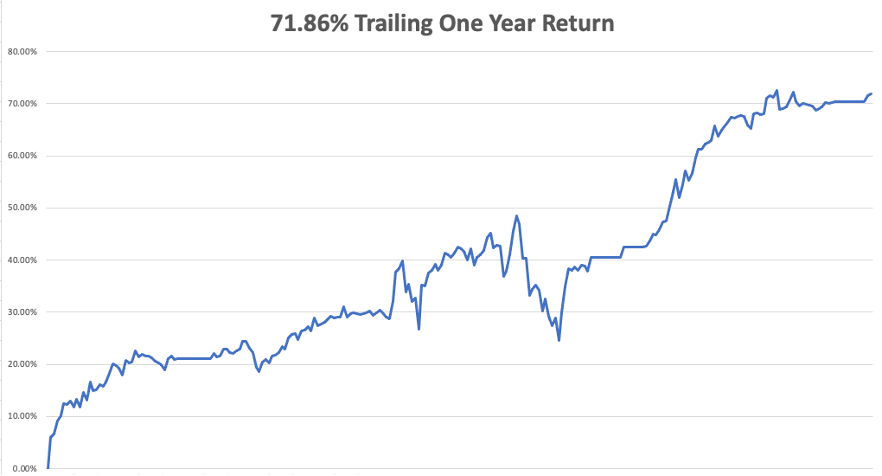
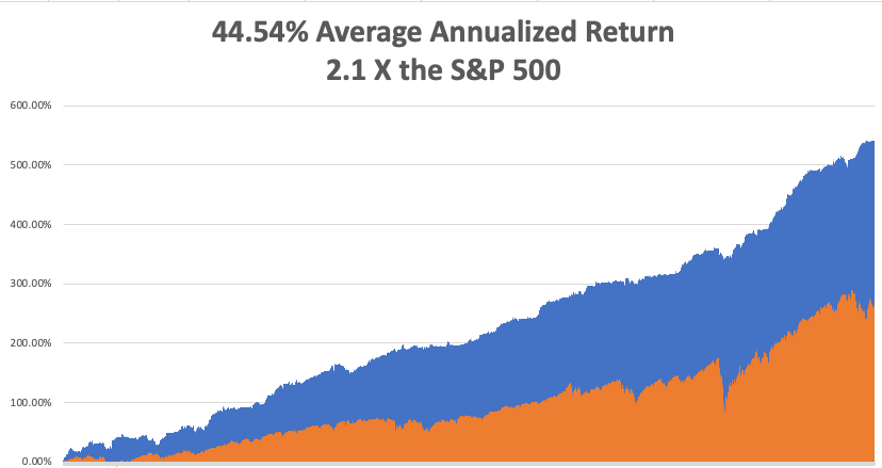
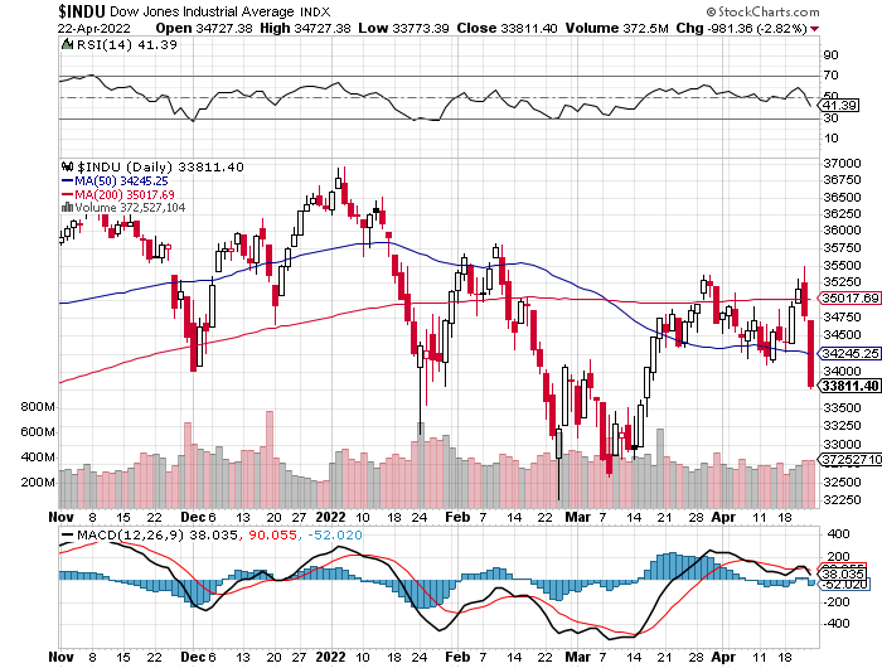
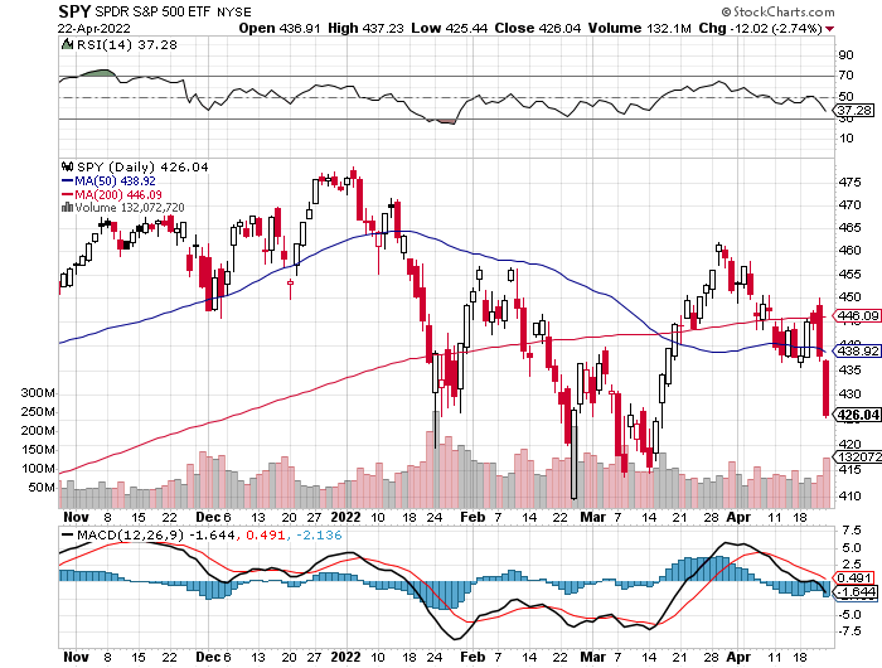
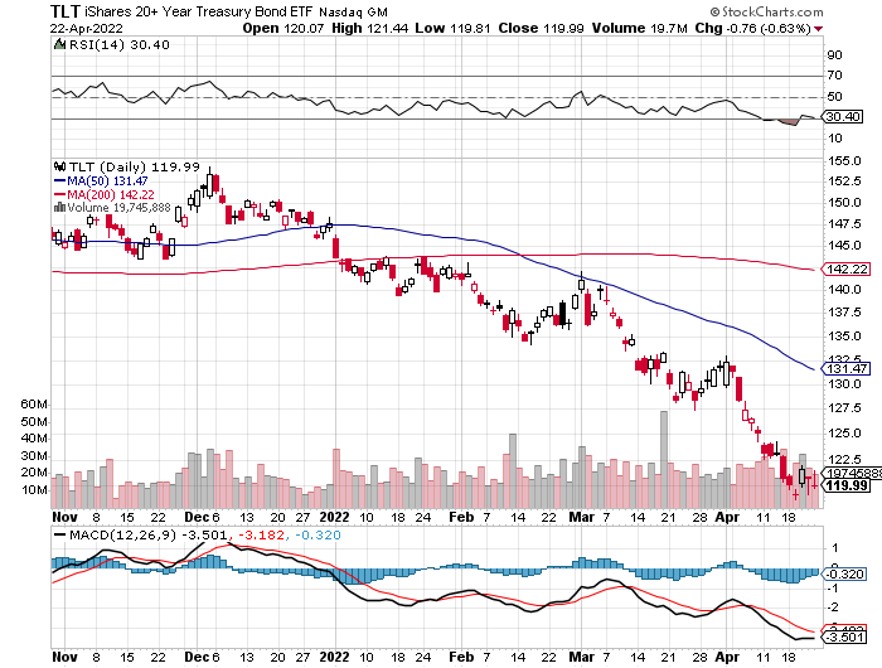
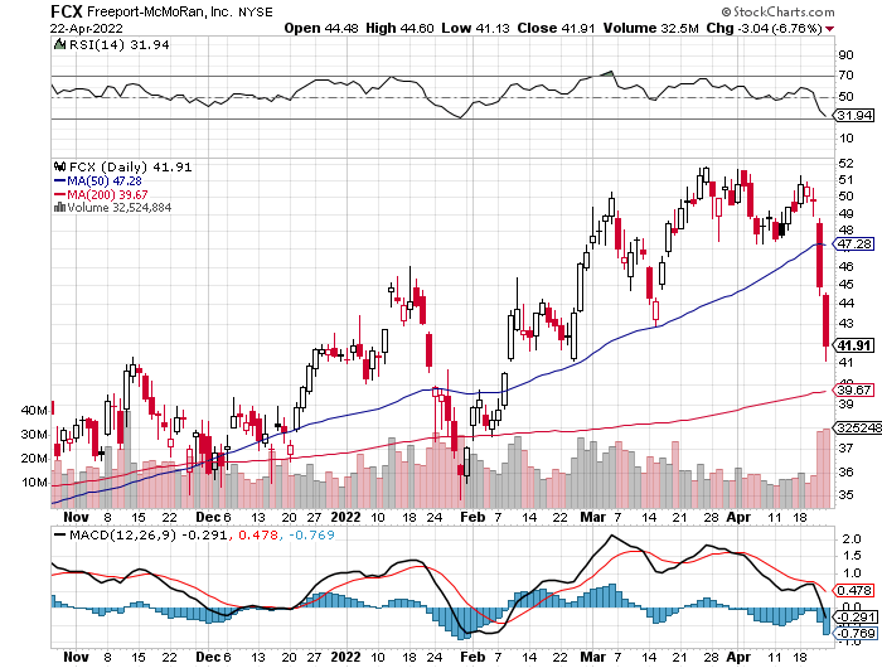
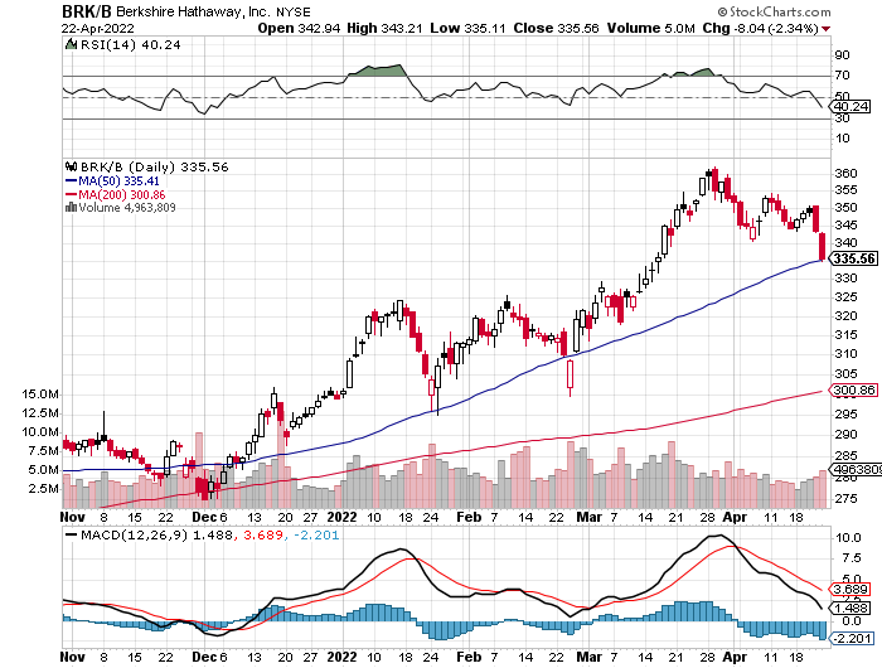
Legal Disclaimer
There is a very high degree of risk involved in trading. Past results are not indicative of future returns. MadHedgeFundTrader.com and all individuals affiliated with this site assume no responsibilities for your trading and investment results. The indicators, strategies, columns, articles and all other features are for educational purposes only and should not be construed as investment advice. Information for futures trading observations are obtained from sources believed to be reliable, but we do not warrant its completeness or accuracy, or warrant any results from the use of the information. Your use of the trading observations is entirely at your own risk and it is your sole responsibility to evaluate the accuracy, completeness and usefulness of the information. You must assess the risk of any trade with your broker and make your own independent decisions regarding any securities mentioned herein. Affiliates of MadHedgeFundTrader.com may have a position or effect transactions in the securities described herein (or options thereon) and/or otherwise employ trading strategies that may be consistent or inconsistent with the provided strategies.
This site uses cookies. By continuing to browse the site, you are agreeing to our use of cookies.
OKLearn moreWe may request cookies to be set on your device. We use cookies to let us know when you visit our websites, how you interact with us, to enrich your user experience, and to customize your relationship with our website.
Click on the different category headings to find out more. You can also change some of your preferences. Note that blocking some types of cookies may impact your experience on our websites and the services we are able to offer.
These cookies are strictly necessary to provide you with services available through our website and to use some of its features.
Because these cookies are strictly necessary to deliver the website, refuseing them will have impact how our site functions. You always can block or delete cookies by changing your browser settings and force blocking all cookies on this website. But this will always prompt you to accept/refuse cookies when revisiting our site.
We fully respect if you want to refuse cookies but to avoid asking you again and again kindly allow us to store a cookie for that. You are free to opt out any time or opt in for other cookies to get a better experience. If you refuse cookies we will remove all set cookies in our domain.
We provide you with a list of stored cookies on your computer in our domain so you can check what we stored. Due to security reasons we are not able to show or modify cookies from other domains. You can check these in your browser security settings.
These cookies collect information that is used either in aggregate form to help us understand how our website is being used or how effective our marketing campaigns are, or to help us customize our website and application for you in order to enhance your experience.
If you do not want that we track your visist to our site you can disable tracking in your browser here:
We also use different external services like Google Webfonts, Google Maps, and external Video providers. Since these providers may collect personal data like your IP address we allow you to block them here. Please be aware that this might heavily reduce the functionality and appearance of our site. Changes will take effect once you reload the page.
Google Webfont Settings:
Google Map Settings:
Vimeo and Youtube video embeds:
